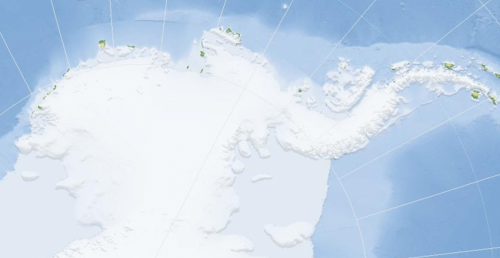Warning that Antarctic ice sheet a 'sleeping giant'

New research has led to a warning from a leading Antarctic expert that the world is on track for massive sea level rises resulting from the melting of an ice sheet.
The research, involving Victoria University of Wellington scientists, has revealed that if carbon dioxide levels in the atmosphere continue increasing as predicted, the giant East Antarctic ice sheet will melt.
"Our study shows that this ice sheet becomes unstable and melts if carbon dioxide levels in the atmosphere reach 600 parts per million—levels which may be reached by the end of the century if emissions reductions targets agreed to recently in Paris are not met," says Professor Tim Naish, Director of Victoria University's Antarctic Research Centre.
"If the Antarctic ice sheet completely melted, global sea level would rise about 60 metres. It's a sleeping giant."
The research, published this week in prestigious international journal Science, documents the growth of the first continent-wide ice sheet on Antarctica 34 million years ago.
Led by Italian scientist Professor Simone Galeotti from the University of Urbino, the research is based on geological drill cores taken from the Ross Sea near New Zealand's Scott Base 16 years ago by the international Cape Roberts Drilling Project.
"The drill cores show that the first Antarctic ice sheet was quite dynamic. It advanced and retreated many times between 34 to 35 million years ago before finally stabilising at its largest extent when atmospheric carbon dioxide levels dropped below a threshold of 600 parts per million," says Professor Naish, who participated in the original drill core expedition and is a lead author on the paper.
With carbon dioxide levels already at 400 parts per million and predicted to go higher, this study provides valuable insights into the potential future stability of the Antarctic ice sheet.
"We know that parts of the ice sheet sitting below sea-level in West Antarctica are already melting in response to current global warming, but the much larger East Antarctic ice sheet, which sits mostly on rock above sea-level, was thought to be more stable," says Professor Naish.
"We found it is vulnerable, and was much smaller the last time atmospheric carbon dioxide levels matched those predicted before the end of the century."
The research also provides the first direct evidence that ice expanded all the way to the coast and out into the ocean, causing erosion of the seabed.
Victoria's Emeritus Professor Peter Barrett, also an author on the study, was the project's Chief Scientist. The researchers cored through 1500 metres of sedimentary strata beneath the seafloor between October 1997 and December 1999, capturing Antarctic ice margin history from 35 to 17 million years ago.
"It's great to see these geological archives, recovered by New Zealand's pioneering 1990s drilling technology, continuing to provide important new insights into how Antarctica is affected by climate change," says Professor Barrett.
More information: S. Galeotti et al. Antarctic Ice Sheet variability across the Eocene-Oligocene boundary climate transition, Science (2016). DOI: 10.1126/science.aab0669
Journal information: Science
Provided by Victoria University of Wellington



















